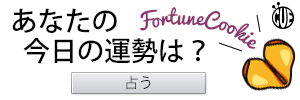5フレーズ英語で伝える日本文化
参拝 Worship
外国人に英語で説明しよう

日本は、自分のことを「無宗教」と考える人の多い国ですが、年末年始や人生の節目には、神社やお寺を訪れる人も多く、参拝の習慣は日本文化に深く根付いています。たいていの場合は、親の素振りをまねる程度で、正しい作法やその意味は日本人でもなかなか知らないものです。しかし、外国からのお客さんを神社やお寺に連れていく機会があれば、正しく説明してあげられるとよいですよね。今日はこの参拝の作法を学びながら、5フレーズ英語で伝えてみましょう。
Bow once before entering the “torii” (Shinto shrine gate) or Buddhist temple gate, and walk on the side of the path as it is considered disrespectful to the deities to walk in the middle.
神社や寺院の鳥居や門をくぐる時は、まず一礼してから進み、参道の真ん中を歩くことは神仏に失礼になるので道の端を歩きます。
The area called “chozuya/ chozusha“ is equipped with a water-filled stone basin and a wooden/ bamboo dipper so that visitors can purify and prepare themselves for their visit by washing their hands and rinsing their mouth.
手水舎(ちょうずや・ちょうずしゃ)には、石造りの水盤と木や竹等でできた柄杓(ひしゃく)が備えられており、手を洗い、口をすすぐことによって参拝のために身を清めます。

In the past, gold, silver, and rice were given to shrines as offerings, but since the Muromachi Period (1336-1573), it became common practice to instead offer money called “O saisen”.
もともと神社には、金銀やお米を奉納していましたが、室町時代(1136年~1573年)からお賽銭としてお金を納める形に変わりました。
The bell is rung by swinging the attached rope called “suzuno-o” (a bell cord) to offer prayers, and it is said that this ritual awakens the deities in the hope that they will come down to the shrine.
鈴の緒(すずのお)と呼ばれる綱を振り、鈴をを鳴らして参拝しますが、この儀式は神仏を呼び覚まし、その降臨を願うためにすると言われています。
At a Shinto shrine, the most common worship ritual is to bow twice, clap your hands twice, and then bow once again, but at a Buddhist temple hands are instead joined together in prayer without clapping.
神社では「二拝二拍手一拝」(礼2回、拍手2回、礼1回)が一番一般的で、お寺では拍手をせず合掌で参拝します。



















